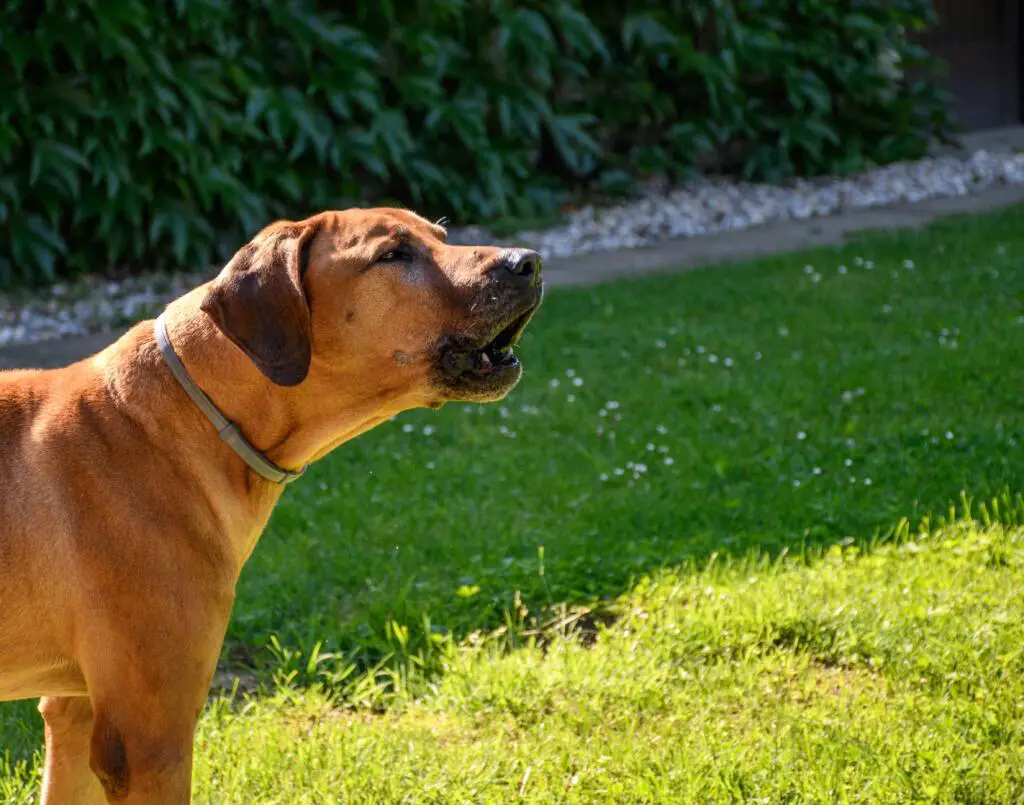Without proper dog training, how does anyone expect a dog to know what makes its owner happy? For example, if you scream out your dog’s name every time it does something wrong, your dog will associate its name with negatives. Then, if you call your dog using its name, it may run away, mistakenly thinking that you will punish it.
When dogs go into training, they always do better when training with their owner. The reason is that the training benefits both the dog and the owner. Try to open your mind to the idea that if your dog is doing something wrong, it is either because it lacks training or you made mistakes by giving the wrong signals, and the dog is confused. Here are five common dog behavior problems, followed by suggestions for potential solutions:
- Potty issues
- Aggression
- Chewing
- Separation anxiety
- Barking

Article contents
Potty issues
To encourage your dog or puppy to go in the proper place, it helps to have a set routine. Take your dog to the spot where you want them to do their business. If they get the job done in the correct place, encourage them with praise. Many potty problems are fixable by taking your dog outside frequently on a very regular schedule. Most dogs want to go potty after eating, so be sure to let them have that chance after every meal. Dogs like to go first thing in the morning, just like people. Try waking them up with excitement each morning and say let’s go “pee pee.” Then, immediately take them outside.
Accidents happen for various reasons. A dog may piddle on the floor due to excitement. Male dogs can urinate to mark their territory. Dogs can make a mess to get attention. Puppies may need lots of practice to learn the proper place. Older dogs may suffer from incontinence just like older adults. Leaving a dog for an extended period without a chance to relieve itself will cause a potty accident because a dog cannot hold it any longer. All dogs may make an occasional mistake.
Never punish a dog when you come home to find a mess in the house. The dog will not know what’s upsetting you and will think you don’t like it. The dog could have made the mess a long time before you arrived, and the dog will not even remember doing it.
Whatever the reason, if a dog eliminates in the wrong spot, clean up the mess immediately and thoroughly. The biggest problem is getting rid of any remaining scent. Dogs’ noses are very sensitive. The slightest remaining odor may trigger your dog to use the same spot again. Use a disinfectant cleaner if possible.
Practice frequently with your dog by taking it out. When it goes in the proper area, reward your dog with lots of praise.
Aggression
Aggression is a serious issue and goes beyond just biting. Biting can be controlled by restraining a dog on a leash and, if necessary, using a muzzle. Aggression is more serious, especially if a dog turns on its owner or attacks a family member or another pet. Seek out the help of a professional dog trainer for obedience training and be very diligent in working with your dog to get any unwanted aggression under control.
Chewing
Puppies chew as part of their exploration of the world. They chew to relieve teething pain and out of boredom. There is no need to stop the chewing, only redirect it to an appropriate chew toy. One thing that helps is to remove as many things as possible that a pup could chew. Do not leave chewable stuff on the floor. Put things in a drawer or up on a shelf out of reach.
Every time you see a puppy chewing the wrong thing, it is a chance to teach it to chew the right thing. Your pup doesn’t know the difference between fancy new shoes and a chew toy. Take away the wrong thing with a stern “no” and immediately give a chew toy. With enough repetition, your pup will happily chew the toys that are for that purpose.
For an adult dog, destructive chewing may be from boredom or a symptom of separation anxiety. The best solution is to keep the dog from having access to chewable things. Work with a dog trainer on cage training if necessary to leave your dog in a safe place when it cannot be under supervision.
Separation anxiety
Separation anxiety is common with some rescue dogs because they have the memory of being abandoned. For any dog with separation anxiety, five minutes can feel like five hours. Working with a dog trainer for cage training can help. Also, you can use desensitization training. This method helps the dog become accustomed to being left alone by increasing the time increments as the dog becomes comfortable.
Try this technique if your dog freaks out whenever you leave the house. First, do not pay the dog extra attention when getting ready to go. Do everything you normally do before leaving the house, like getting your keys and collecting your things. Let the dog have its anxiety build, but then do not leave the house. Then, on some occasions, leave the house suddenly without any preparation. Stay outside for a few minutes and come right back. The secret to this technique is to vary the time and methods of how you leave the house and how long you are gone.

Barking
Barking is normal for most dogs. Barking from being excited to see you and when a dog is playing is perfectly fine. Barking as a warning is fine, also. One of the reasons that humans and dogs are such good friends is that a dog’s barking as a warning helped humans survive in the wild. The goal is not to keep a dog from barking but instead to teach the dog when to stop. Yelling at a dog to try to stop it from barking sounds to the dog like you are barking as well, and it has the opposite effect from what you want.
Instead, what you want to do is to reward the dog for being quiet on command. If you take your dog to obedience training classes and teach it how to sit, stay, and come to you, then you can use these commands whenever your dog is barking to get it to come to you, sit down, and stay in place. You can tell the dog “stop” when it is barking and then give a reward when it comes to you.
The one exception is when the dog barks for attention and not for a warning. In that case, do not give a reward, as this encourages barking behavior. Just ignore the barking until the dog stops on its own. Then, reward it for being quiet.
Be patient and consistent
Whatever issues you have with dog behavior problems, be patient and consistent with your training methods. Work with a professional trainer to learn what to do, and then practice with your dog frequently until your dog’s behavior improves.
